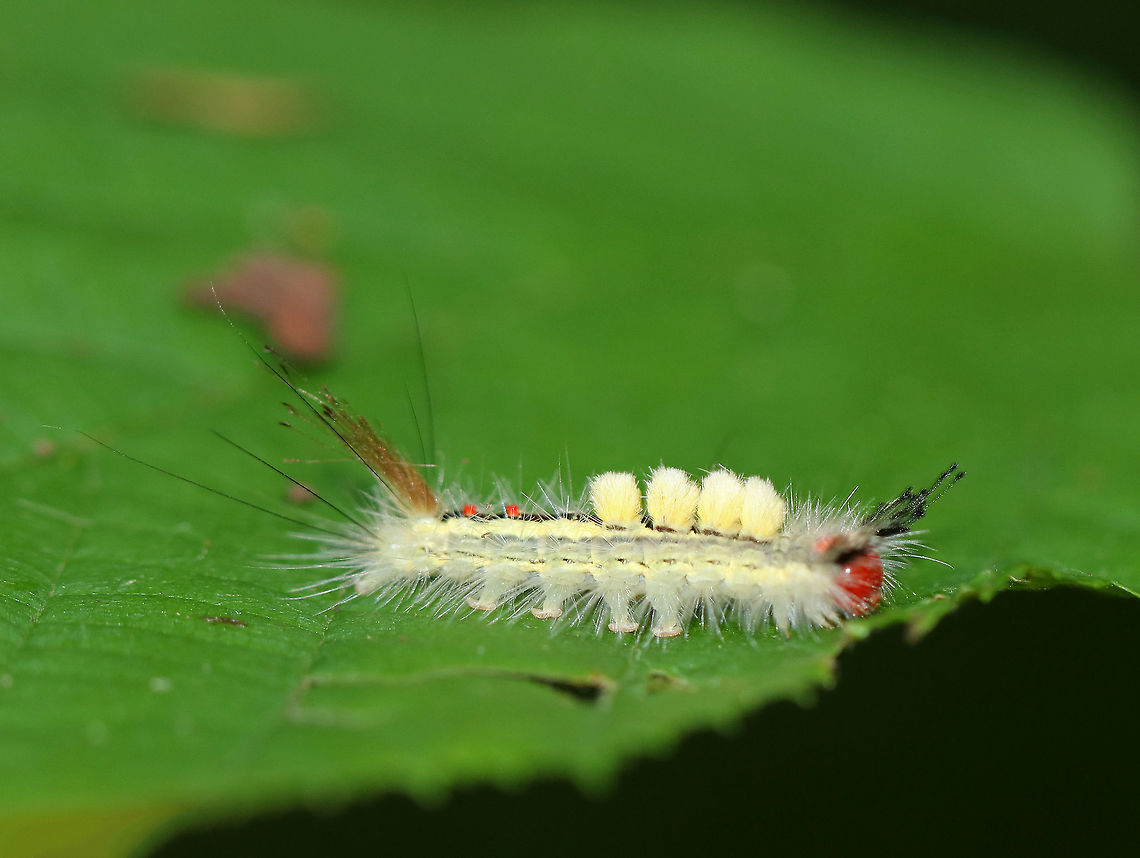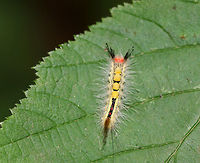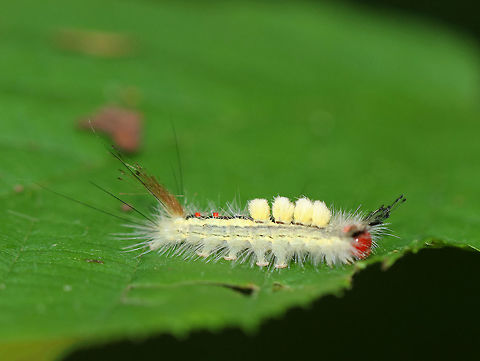 Promoted
Promoted
White-marked tussock moth caterpillar - Orgyia leucostigma
This caterpillar has been frustrating me for several years now. Each summer, I try to get a sharp, side profile shot of it, and every year, I fail. This is my best attempt so far, so I decided to post it and will keep trying until I get a clear shot.
Bright red head, yellow middorsal tufts on A1-A4, and a black middorsal stripe that is flanked by yellow subdorsal stripes. It was about 3 cm long.
Spotted in a deciduous forest.


"Orgyia leucostigma", the White-marked tussock moth, is a moth in the family Lymantriidae. The caterpillar is very common especially in late summer in eastern North America, as far west as Texas, Colorado, and Alberta.

comments (8)
I can relate to the focusing challenge on such hairy caterpillars, it seems almost impossible to get it right.
Theorizing a bit, and by all means stop me if it's too obvious: On this subject, the closest thing coming towards you would be the longest hair that is pointing in your direction. Ideally, your depth of field starts there. Yet it would be impossible to auto focus on. So this could be a manual focus job where you focus slightly before the main subject. That is doable with some tries, yet now you need to cover a deep depth of field to span the entire subject. I'd say f/16 maybe even, and that requires flash. Or f/11 and take a step back, and then crop back in if the shot is sharp.
The other aspect to consider regarding depth of field is the focal plane. You're in a slightly diagonal angle, which makes the DOF requirement even larger, compared to if you would be at an exact 90 degree angle. You've made the correct artistic choice though regarding the diagonal position, because otherwise the hair surrounding the neck would obscure the head entirely. Posted 7 years ago
These crazy caterpillars are so tricky to shoot! They have every possible kind of setae and hair going in every direction! Posted 7 years ago
Stepping back very often solves the problem, and you have enough MP to do that. However, this situation is so difficult that even then you may struggle to get the right focal point. So, a better solution indeed is to focus before the subject. In this situation, that little rotten spot of leaf under the head would be a nice helper. If you don't have an anchor point, first focus on the head, and then use the manual focus ring and turn it slightly towards you. This is a counter intuitive thing to do because it will look unsharp in your view finder, but that's not how the photo will turn out. View finders don't show depth of field. So just try, inspect, adjust, try, etc.
I use a simple technique whereby I imagine a top view of the situation, containing angle, focal point, depth of field and how they relate to each other. Such an illustration makes these seemingly complicated mix of variables suddenly very clear and simple. I'll cook you up one of those diagrams for this specific situation. Probably somewhere early next week. Posted 7 years ago, modified 7 years ago
https://ferdychristant.com/how-to-photograph-hairy-macro-subjects-68268aa21327 Posted 7 years ago